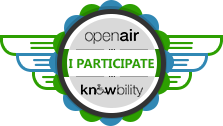Starting last October, I participated with other experts on concussion/mild traumatic brain injury on a consensus panel to update guidelines for Health Professionals about how to treat adult patients with short-term symptoms and persistent symptoms after concussion/mild traumatic brain injury.
It feels great to be contributing to guidelines that will improve care for patients with mTBI/concussion. It gives me hope for the future. And it makes my difficult experience with finding appropriate resources for recovery alittle easier knowing that I can use my knowledge and experince to help others. I worked on the first edition of the guidelines, starting four years ago, and and now the update or second edition.
Ontario Neurotrauma Foundation (ONF) in Canada has sponsored this work. As far as I know, these are the only systematically developed guidelines (in the world) for general Health Professionals on how to treat persistent symptoms for adult civilians. It also contains information about how to treat symptoms right after they occur that have been developed in Australia, New Zealand, Canada and the U.S.
The second edition of the guidelines were published in September 2013 and can be found here:
http://onf.org/documents/guidelines-for-concussion-mtbi-persistent-symptoms-second-edition
The guidelines are written for Health Professionals, but you can read them too.
As a PhD, I am trained to understand the importance of high quality research versus other evidence and thus I am able to use some of my pre-injury skills for this work. As a patient I am able to contribute from my experience and from the many mistakes and pitfalls that I have either experienced myself or heard about from other survivors and their families that I have met in my journey.
Here are five reasons why these guidelines are important for patients (consumers) and their families and friends.
1) The guidelines take concussion/mild TBI seriously.
2) They are a compilation of current knowledge about what to do in the short term after a concussion for civilians. In other words, they educate and provide guidance to Doctors about how to take symptoms seriously.
3) The existence of guidelines about persistent symptoms from concussion/mTBI is acknowledgement that some patients (consumers) have persistent symptoms and that appropriate treatment can be helpful to these patients. Not everyone gets better from concussion immediately and those who don’t get better need treatment.
4) They are a compilation of current knowledge about what to do for patients with persistent symptoms.
5) The guidelines can be used in any country although they are written for the Canadian Health Care System. They can also serve as a model for the development of guidelines in every country.
The guidelines were just presented last week at the American College of Rehabilitation Medicine annual conference in Orlando, Florida. Hopefully we will be hearing more about them. I have alot more to say about them in the next posts.





Recent Comments